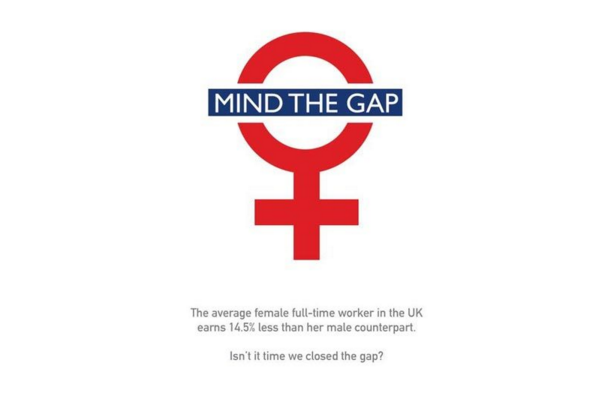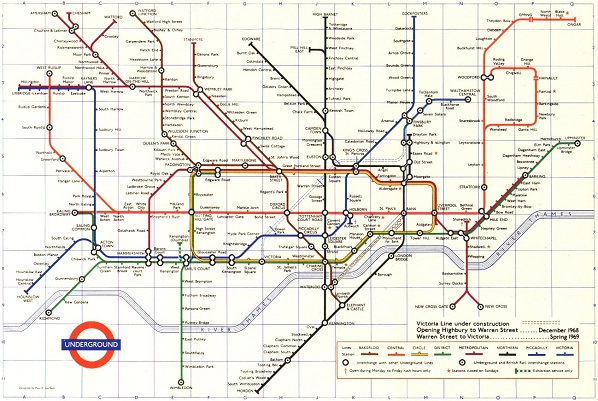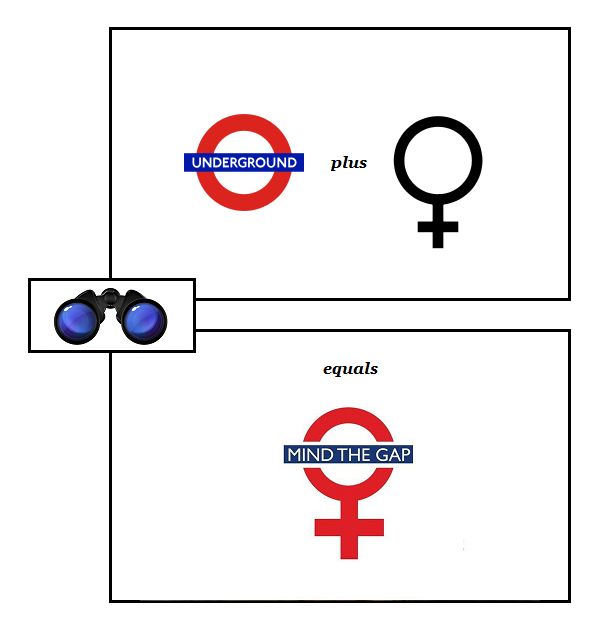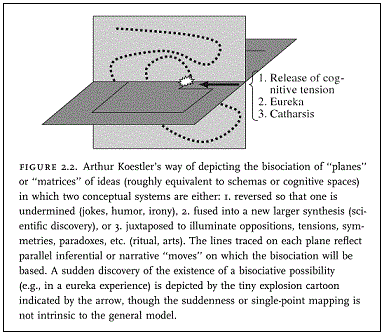The Astounding Case of the Unequal Equals
[ by Charles Cameron — how two ideas beget a third ]
.
I’m a Brit, so the motto Mind the Gap is familiar to me — it warns people not to step between platform and train when entering or exiting the Tube —
— as is the London Underground symbol — and for that matter, the glyph for female, earlier the alchemical symbol of Venus.
**
Today’s Telegraph contains a graphic that interests me a whole lot, under the title Equal Pay Day: 14 ways to visualise the gender pay gap:
**
Does it interest me because I’m a fan of the London Underground? Not exactly. The Underground’s graphics, then? I’ll admit to an admiration for the Underground’s justifiably celebrated map —
— which I’ve long thought would make a superb extended HipBone Game board, shown above in its 1968 incarnation. But that’s not it either. And although I don’t think gender should influence the pay a person receives for a given quantity or quality of work — Quant and Qualit again, one of the weirdst paradoxes my min d has ever encountered — it’s not the politics of the sign that interests and delights me.
**
It’s the way two disparate elements — tube and gender graphics — are combined to create a remarkably powerful third:
It’s a simple, elegant illustration of the intersection of two sets of ideas that Arthur Koestler talked about and that I’m constantly drawing on in my own work:
And yes, I’m aware that technically the equation I’m pointing to happened in two stages, with the substitution of the phrase “mind the gap” for the word “underground” in the blue bar of the tube logo — but the bar was also used, among other things, for the names of individual stations, so I don’t consider that much of a creative leap.
No, it’s the juxtaposition of underground logo with the gender sign by means of a conflation of their respective circles that’s impressive, coupled with the pun on the gender-specific and underground meanings of “mind the gap”.
That’s the very essence of the intersections Koestler was talking about, and illustrates as vividly as I know how, the power released by such an intersection.
**
Oh, and yes — fair play clearly requires fair pay.
And it’s Hedy Lamarr‘s birthday, dammit.








November 10th, 2015 at 11:57 pm
But then, one has to remember that when the gap is a warm, moist environment it is much more dangerous for the human individual, than if it is just cold space, as is the gap between the sun and the earth, if you assume the landing is worst than the fall.